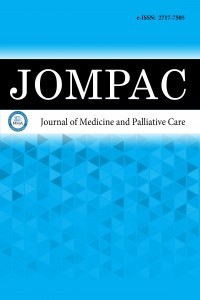1.
Xue G, Gan X, Wu Z, et al. Novel serological biomarkers forinflammation in predicting disease severity in patients withCOVID-19. Int Immunopharmacol. 2020;89(PtA):107065. doi:10.1016/j.intimp.2020.107065
2.
Fois AG, Paliogiannis P, Scano V, et al. The systemicınflammation ındex on admission predicts ın-hospital mortalityin COVID-19 patients. Molecules. 2020;25(23):5725. doi:10.3390/molecules25235725
3.
Salman E, Çelikbilek N, Aydoğan S, et al. Investigation of therelationship of systemic ımmune-ınflammation ındex, C-reactiveprotein and ınterleukin-6 with viral dynamics in patients withCOVID-19]. Mikrobiyol Bul. 2021;55(4):539-552. doi:10.5578/mb.20219706
4.
Magadum A, Kishore R. Cardiovascular manifestations ofCOVID-19 infection. Cells. 2020;9(11):2508. doi:10.3390/cells9112508
5.
Yeboah J, Folsom AR, Burke GL, et al. Predictive value ofbrachial flow-mediated dilation for incident cardiovascularevents in a population-based study: the multi-ethnic study ofatherosclerosis. Circulation. 2009;120(6):502-509. doi:10.1161/CIRCULATIONAHA.109.864801
6.
Yang R, Chang Q, Meng X, Gao N, Wang W. Prognostic valueof systemic immune-inflammation index in cancer: A meta-analysis. J Cancer. 2018;9(18):3295-3302
7.
Zhong JH, Huang DH, Chen ZY. Prognostic role of systemicimmune-inflammation index in solid tumors: a systematic reviewand meta-analysis. Oncotarget. 2017;8(43):75381-75388.
8.
Shi S, Qin M, Shen B, et al. Association of cardiac ınjury withmortality in hospitalized patients with COVID-19 in Wuhan,China. JAMA Cardiol. 2020;5(7):802-810. doi:10.1001/jamacardio.2020.0950
9.
Guo T, Fan Y, Chen M, et al. Cardiovascular implicationsof fatal outcomes of patients with coronavirus disease 2019(COVID-19). JAMA Cardiol. 2020;5(7):811-818. doi:10.1001/jamacardio.2020.1017.
10.
Mao L, Jin H, Wang M, et al. Neurologic manifestations of hospitalizedpatients with coronavirus disease 2019 in Wuhan, China. JAMANeurol. 2020;77(6):683-690. doi:10.1001/ jamaneurol.2020.1127
11.
Puntmann VO, Carerj ML, Wieters I, et al. Outcomes ofcardiovascular magnetic resonance ımaging in patients recentlyrecovered from coronavirus disease 2019 (COVID-19). JAMACardiol. 2020;5(11): 1265-1273. doi:10.1001/jamacardio.2020.3557
12.
Fayol A, Livrozet M, Boutouyrie P, et al. Cardiac performance inpatients hospitalized with COVID-19: a 6 month follow-up study.ESC Heart Fail. 2021;8(3):2232-2239. doi:10.1002/ehf2.13315
13.
Xie Y, Xu E, Bowe B, et al. Long-term cardiovascular outcomes ofCOVID-19. Nat Med. 2022;28(3):583-590
14.
Peluso MJ, Lu S, Tang AF, et al. Markers of immüne activationand inflammation in individuals with postacute sequelae ofsevere acute respiratory syndrome coronavirus 2 infection. JInfect Dis. 2021;224(11):1839-1848.
15.
Visvabharathy L, Hanson B, Orban Z, et al. NeuroCOVIDlong-haulers exhibit broad dysfunction in T cell memorygeneration and responses to vaccination. MedRxiv. 2021. doi:10.1101/2021.08.08.21261763
16.
Gold JE, Okyay RA, Licht WE, Hurley DJ. Investigation oflong COVID prevalence and ıts relationship to epstein-barrvirus reactivation. Pathogens. 2021;10(6):763. doi:10.3390/pathogens10060763
17.
Wang EY, Mao T, Klein J, et al. Diverse functional autoantibodiesin patients with COVID-19. Nature. 2021;595(7866):283-288.
18.
Rinaldo RF, Mondoni M, Parazzini EM, et al. Deconditioning asmain mechanism of impaired exercise response in COVID-19survivors. Eur Respir J. 2021;58(2):2100870.
19.
Patell R, Bogue T, Koshy A, et al. Postdischarge thrombosisand hemorrhage in patients with COVID-19. Blood.2020;136(11):1342-1346. doi:10.1182/blood.2020007938
20.
Matsuzawa Y, Kwon TG, Lennon RJ, Lerman LO, Lerman A.Prognostic value of flow-mediated vasodilation in brachial arteryand fingertip artery for cardiovascular events: a systematic reviewand meta-analysis. J Am Heart Assoc. 2015;4(11):e002270. doi:10.1161/JAHA.115.002270
21.
Inaba Y, Chen JA, Bergmann SR. Prediction of futurecardiovascular outcomes by flow-mediated vasodilatationof brachial artery: a meta-analysis. Int J Cardiovasc Imaging.2010;26(6):631-640. doi:10.1007/s10554-010-9616-1
22.
Celermajer DS, Sorensen KE, Gooch VM, et al. Non-invasivedetection of endothelial dysfunction in children and adults at riskof atherosclerosis. Lancet. 1992; 340:1111-1115.
23.
Kitta Y, Obata JE, Nakamura T, et al. Persistent impairmentof endothelial vasomotor function has a negative impact onoutcome in patients with coronary artery disease. J Am CollCardiol. 2009;53:323-330.
24.
Oliveira MR, Back GD, da Luz GC, Domingos BC, Arena R,Borghi-Silva A. Endothelial function provides early prognosticinformation in patients with COVID-19: a cohort study. RespirMed. 2021;185:106469.
25.
Çiftel M, Ateş N, Yılmaz O. Investigation of endothelialdysfunction and arterial stiffness in multisystem inflammatorysyndrome in children. Eur J Pediatr. 2021;181:91-97.
26.
Ambrosino P, Molino A, Calcaterra I, et al. Clinical assessmentof endothelial function in convalescent COVID-19 patientsundergoing multidisciplinary pulmonary rehabilitation.Biomedicines. 2021;9(6):614. doi:10.3390/biomedicines9060614
27.
Yilmaz Y, Kelesoglu S, Elcik D, Ozmen R, Kalay N. Predictivevalues of systemic ımmune-ınflammation ındex in new-onsetatrial fibrillation following coronary artery bypass grafting. BrazJ Cardiovasc Surg. 2023;38(1):96-103. doi:10.21470/1678-9741-2021-0278
28.
Evans PC, Rainger GE, Mason JC, et al. Endothelial dysfunctionin COVID-19: a position paper of the ESC Working Group forAtherosclerosis and Vascular Biology, and the ESC Council ofBasic Cardiovascular Science. Cardiovasc Res. 2020, 116, 2177-2184.

